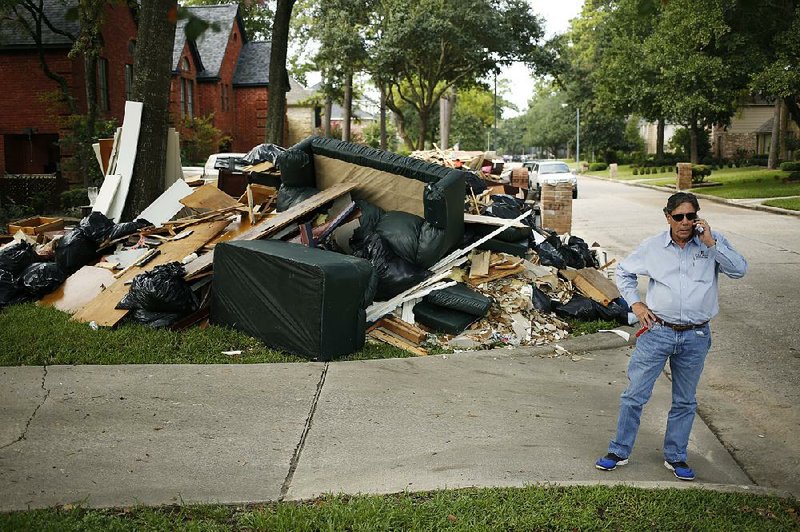Legislation intended to fix the nation's troubled flood-insurance program remains stalled in the Senate, even as a dangerous storm barrels toward the southern Atlantic coast.
The program, administered through the Federal Emergency Management Agency, is the primary source of flood insurance in the U.S., with about 5 million policyholders across the country. But it remains more than $20 billion in debt, and some experts say it must be overhauled in an era of powerful storms like Harvey, Irma and Maria, which all struck parts of the U.S. last year.
"They have not dealt with the gorilla in the room, which is proactively addressing these types of disasters for the future," said Rob Moore, a senior policy analyst at the Natural Resources Defense Council. "Too much of the U.S.' response to natural disaster is completely reactionary; we throw a bunch of money after it happens."
The debate has taken on greater urgency in the 2018 storm season as Hurricane Florence gathers strength in the Atlantic Ocean. Florence has taken aim at a vast stretch of the U.S.' eastern coast from South Carolina to Maryland. It is poised to become the strongest hurricane in almost 30 years to threaten the Carolinas, and it has already prompted widespread evacuations.
Instead of paying to rebuild, Moore said, Congress should direct FEMA to provide more assistance to relocate residents from areas that are vulnerable to flooding, fortify and elevate less-exposed properties to protect them from wind and water, and implement other mitigation efforts.
Congress spent $120 billion on disaster relief in the wake of hurricanes and wildfires last year, while forgiving $16 billion in debt accrued by the National Flood Insurance Program.
Until the 50-year-old program stops paying to rebuild homes that have flooded an average of five times -- so-called Severe Repetitive Loss Properties -- and make other changes, the losses will keep mounting, Moore said.
Legislation that passed in the House in November would begin to make changes, requiring FEMA to tell homebuyers if their properties have flooded before and mandating that communities come up with plans for minimizing flood risk.
The bill, the 21st Century Flood Reform Act, would limit future coverage and discounts for high-risk properties, modify premiums and surcharges paid by policyholders, expand opportunities for private insurers to sell policies, offer assistance to low-income households, and authorize financing for flood-mitigation assistance.
But the Senate has yet to act on the measure. Congress has extended the flood-insurance setup without change seven times over the past year, with the latest extension set to expire Nov. 30.
By then, the severity of Hurricane Florence will be known. The duration of the rainfall and the trajectory that the storm eventually takes will be key to the flooding risk, according to James Belanger, a senior meteorological scientist at the Weather Co., a unit of IBM. The trajectory "is really worst-case scenario for rainfall and flooding impact of the central part of North Carolina as well as Virginia," Belanger said.
Although there are more than 444,000 National Flood Insurance Program policies in force in North Carolina, South Carolina and Virginia, the vast majority of those policies are for properties located in the Special Flood Hazard Areas on the program's Flood Insurance Rate Maps, with very little flood insurance being obtained in flood-prone areas outside the mapped flood plains, said Samantha Medlock, head of North America capital, science and policy for Willis Towers Watson.
This means that many families will suffer uninsured losses, since standard homeowners-insurance policies do not cover flood damage, she said.
FEMA did not respond to emails seeking comment.
Currently, the National Flood Insurance Program has about $10 billion in borrowing authority remaining, and Hurricane Florence isn't likely to consume all of the funding, said R.J. Lehmann, director of finance, insurance and trade policy for the R Street Institute, a Washington think tank.
"They are prepared to handle this storm," Lehmann said. "But if we have multiple storms -- there are others out there in the Atlantic basin -- things could get a little more dicey."
Information for this article was contributed by Michael Smallberg and Ivan Levingston of Bloomberg News.
Business on 09/12/2018

